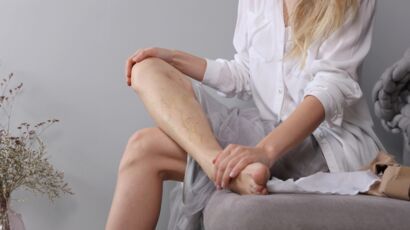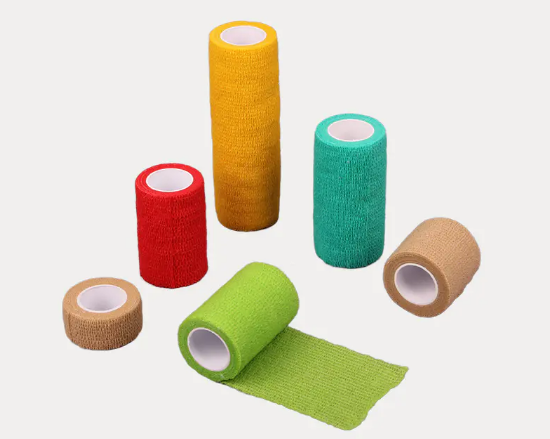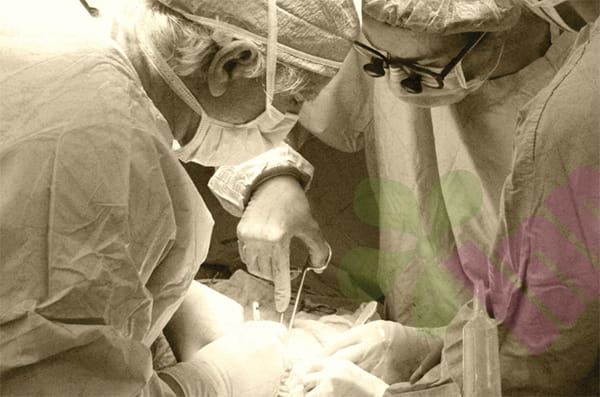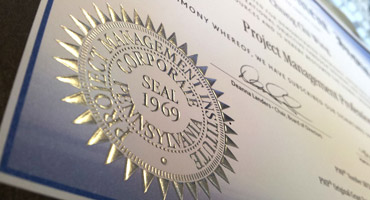In the vascular surgery clinic, about 65% of patients with lower limb ulcers are not diabetic patients. The root cause is venous system dysfunction. Symptoms include leg swelling, darkening of the skin (pigmentation), thickening of the skin (lipodermatosclerosis), and ulcers (wounds) which, in severe cases, most commonly occur near the ankles. This vascular disease, caused by weak vein walls and valve dysfunction, is quietly eroding the quality of life of patients in the form of complications such as skin ulcers and thrombosis.

Of varicose veins :
In a normal venous system, when the calf muscles contract or move, they generate a lot of force, driving blood back to the heart through the veins against gravity. When the muscles relax and the veins in them dilate, it creates a gradient pressure system that helps blood move from superficial locations into the deep veins. For normal people, the entire calf muscle pump system is very effective - walking forces 70% of the blood back from the calf. If the calf muscle pump and the valves in the venous channels do not work, the patient will develop chronic venous insufficiency, and occupational factors become an important driving force. For teachers, surgeons, and other people who need to stand for a long time, their gastrocnemius muscle pump function gradually weakens due to continuous contraction, resulting in a 30%-50% increase in venous return resistance. The accumulation of abdominal fat in obese people increases abdominal pressure by 20-30mmHg, further increasing the burden on venous valves. Data show that the incidence of varicose veins in people with a BMI>28 is 2.3 times that of people with a normal weight. As the disease progresses, venous hypertension causes increased capillary permeability and plasma protein extravasation to form tissue edema. Skin nutritional disorders lead to thickening of the stratum corneum and pigmentation, eventually forming "lipid scleroderma" on the ankles, which is a precursor to ulcers.
Complications of venous insufficiency :
The complications of venous insufficiency can be divided into: ① acute - pulmonary embolism; ② subacute - venous stasis and secondary varicose veins; ③ chronic - peripheral malnutrition.
When the skin breaks down to form a venous ulcer, treatment should follow the "TIME" principle:
- T (Tissue) Tissue treatment: sharp debridement to remove necrotic tissue and retain healthy granulation tissue. Maggot biological debridement can be used for ulcers that are deep into the fascia.
- I (Inflammation) Infection control: Silver ion dressings can release Ag+ to destroy bacterial DNA, and the effective inhibition rate for MRSA is 98%. When the exudate has a peculiar smell or leukocyte esterase is positive, oral cefuroxime should be taken.
- M (Moisture) Moisture balance: Alginate dressings absorb exudate to form a gel, maintain a moist wound environment, and promote the release of growth factors. The frequency of dressing changes is adjusted according to the amount of exudate, usually every 2-3 days.
- E (Edge) Edge treatment: Hydrocolloid dressings can soften the keratin at the edge of the ulcer and promote epithelial crawling. For stubborn ulcers, platelet-derived growth factor gel can be used in combination.
Pressure therapy is a key auxiliary method. Medical elastic stockings need to provide a gradient pressure of 15-20 mmHg and should be worn in the morning before getting out of bed. Studies have shown that standardized pressure therapy can increase the healing rate of ulcers by 40% and reduce the recurrence rate by 55%.
Daily prevention and post-operative care:
Prevention: Do proper physical exercise to increase the elasticity of blood vessel walls. Do not cross your knees for too long when sitting to avoid affecting venous return. Raise the affected limb 30-40° when lying in bed to facilitate venous return.

Postoperatively: Raise the affected limb and pay attention to the activities of the affected limb to promote venous return and wound healing. While lying in bed, start to do dorsiflexion and extension of the foot after surgery, with the help of the contraction and squeezing of the peroneal muscles to facilitate the return of deep venous blood. You can get out of bed and move around 2 to 3 days after surgery. The elastic bandage should be of appropriate tightness and can be removed after 2 weeks. Do dorsiflexion and extension of the foot during bed rest, and try to get out of bed and move around early to promote venous return in the lower limbs to avoid deep vein thrombosis in the lower limbs.
After discharge, continue to use elastic bandages or stretch bandages for 1-3 months, and gradually increase the amount of activity. Instruct patients to eat high-calorie, high-vitamin, high-protein, and easily digestible foods, such as lean meat, fish, shrimp, crab, fruits, and vegetables, and avoid hard and irritating foods. The patient's nutrition is supplemented, the body's resistance is improved, and the surgical incision heals well.
The wound management of chronic venous insufficiency of the lower limbs is essentially a three-dimensional prevention and control of venous hypertension. From etiology blocking to moist healing, from pressure therapy to minimally invasive intervention, the multidisciplinary collaboration model can reduce the incidence of serious complications from 32% to 8%. When pigmentation or venous masses appear on the skin, timely medical treatment can avoid the risk of amputation for most patients. Remember: varicose veins are not a "cosmetic problem" but a vascular disease that requires systematic management. For more information on Innomed®Elastic Bandage Self-Adhesive, refer to the Previous Articles. If you have customized needs, you are welcome to contact us; You Wholeheartedly. At longterm medical, we transform this data by Innovating and Developing Products that Make Life easier for those who need loving care.
Editor: kiki Jia

 English
English عربى
عربى Español
Español русский
русский 中文简体
中文简体








